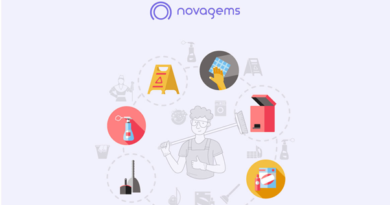How Technology Impact on Patient Health Information
Interoperability is a large component of the technological advances impacting the healthcare industry. The ability for computer systems to exchange information of accurate and essential data they receive, interoperability is vital as we shift to digital health records. Sharing patient information in this way ensures access to records by all the medial processionals an individual may see. It allows any doctors, surgeons, nurses or other medical providers to get a complete picture of their patients’ health, which in turn enables them to provide appropriate care. It allows for the immediate transfer of this important data. The only drawback is that, with so much information to share, medical professional end up getting access to more data than they need.
Managing the influx of data, new applications are being developed to lessen the time practitioners spend finding what’s relevant, within a patient’s medical history, to a specific appointment. Sifting through all the medical information on a patient not only requires them to leave their electronic health record (EHR,) but to enter multiple third-party sources to gain a complete picture. This back and forth presents a complicated process.
When data isn’t accessible
Easy access to data across different medical offices is important for the patient experience as much as for the practitioner’s ability to properly treat them. According to The Office of the National Coordinator for Health Information Technology, 32 percent of people who see a doctor experience a gap in information exchange. Additionally, about 5 percent of people end up having to redo a medical test or procedure because results are unavailable. This severely damages the patient’s experience which can make them less likely to visit their doctor or agree to testing no matter how necessary.
Information in too many places
The current practice for healthcare professionals to gain access to the variety of patient data that is available requires a lot of effort. Typically, medical professionals must leave a patient’s electronic health record and log into a separate portal to search for actionable data to use in conjunction with care decisions. Sometimes, they’ll need to review more than one third-party source. It create a tedious step in the process of providing patient care that detracts from the time a doctor spends interacting with their patient. There’s also the risk of missing important information as medical professionals shift between records and data sources.
Having records available digitally is a huge step in access and security for patient information, but only if the workflow is efficient enough to ensure effective results for patients in need of care.
How to reign in dispersed data
Holon Solutions has created technology to streamline the process of practitioners accessing patient information. A combination of event-triggering and sensor technology works in tandem to produce only the most meaningful and actionable patient information within any electronic health record. Content is accessible from any third-party source without the need for interfaces. The technology works to detect workflow events like when a doctor opens up their patient’s chart during a visit. All data sources connected to the provider’s organization get reviewed for appropriate data, presenting only the most relevant information. This process streamlines workflow, allowing physicians to spend more time focused on the patient rather than sifting through data unrelated to that specific appointment.
Robert Connely IV, Chief Strategy Officer at Holon Solutions says that this technology “solves numerous interoperability challenges healthcare providers face every day such as gaps in data, an overabundance of irrelevant information…and the burden of manually search for meaningful, action information within their workflow.”
In addition to improving workflow, this new technology from Holon allows providers to customize what information appears from all connected, digital, third-party sources. This ensures only the most meaningful and actionable data comes forward at the time care is being administered.
What happens with better workflow?
The benefits to technological options such as what Holon is presenting impacts workflow most significantly. Medical practitioners can:
- Spend less time spent searching through data, leading to a shorter patient visit that’s more effective.
- Gain back time, which leads to a higher volume of patient visits.
- Gets a better experience interacting with electronic health records because of the automatic display of relevant data?
Aegis Health Tech, A Leading Healthcare Software Development Company works for Innovations in this area are still up and coming, but developments that improve the usage of EHR and digital information will only help the healthcare industry provide better services to the community.



